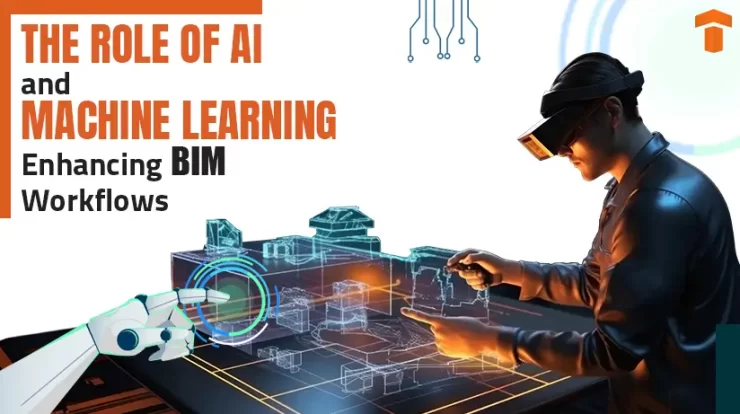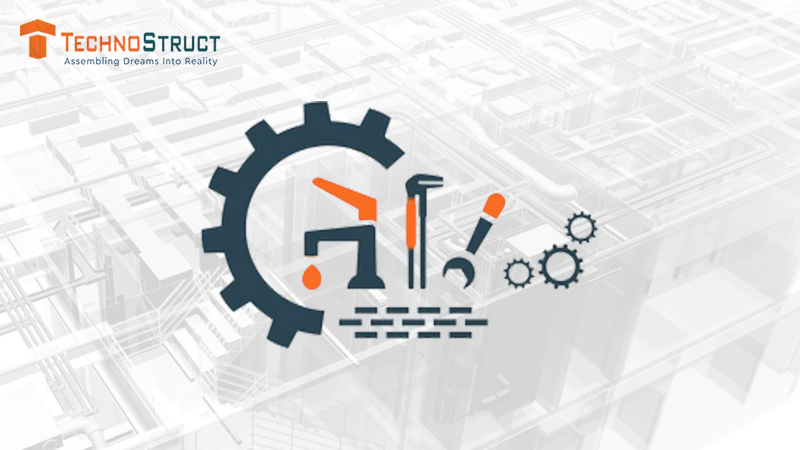
The integration of Building Information Modelling (BIM) and Artificial Intelligence (AI) in the construction industry, along with Machine Learning (ML), has revolutionized the fields of architecture, engineering, and construction.
According to a study by McKinsey, AI can automate up to 50-60% of repetitive tasks in BIM workflows.
By leveraging AI and ML, BIM processes are becoming more efficient, enabling construction professionals to optimize resource allocation, mitigate risks, and deliver higher-quality projects.
This article dives into the roles of AI and ML in augmenting BIM workflows, highlighting their transformative impact on the construction industry’s efficiency and productivity.
Boosting Workflows: AI in Construction, ML in BIM
Some of the ways the workflows can be boosted are:
Improving The Intelligence of Design:
Large volumes of data produced during the design phase can be analyzed using AI and ML techniques. These tools can identify trends, forecast results, and offer priceless insights to engineers and architects by leveraging historical data, best practices, and real-time inputs.
Predictive Models and Simulations:
Artificial intelligence in the construction industry and ML techniques enhance life cycle assessment (LCA) for architects and engineers. These approaches create prediction models that anticipate factors like energy usage, structural integrity, and occupant comfort by leveraging historical data and machine learning algorithms.
Real-Time Inspection and Maintenance:
Building performance and maintenance requirements can be tracked in real-time by integrating AI and ML technologies into BIM systems. Data is stored securely in real-time using online spreadsheets, ensuring accessibility and integration.
Intelligent Resolution of Conflicts and Clash Detection:
There may be clashes and conflicts between different building elements during the design and construction stages. Artificial intelligence in the construction industry is able to use the BIM model, spot conflicts, and make wise suggestions for how to resolve them.
AI and ML Integration in Construction & BIM Workflows
Autodesk: Autodesk, a leading software company in the AEC industry, has launched a new project data storage location in Australia for Autodesk Construction Cloud (ACC).
Trimble: Trimble Connect, an advanced BIM collaboration platform, integrates AI and M L to enhance collaboration and data management, making Hinkley Point C the first UK nuclear power station to be constructed over a generation.
Examples:
- The Shard in London was designed with a signature angular shape using artificial intelligence (AI) and optimized for energy efficiency and natural light.
- Boston Dynamic Headquarters in Massachusetts uses ML-driven predictive maintenance to ensure optimal building performance and low operating costs.
Conclusion
AI in construction is transforming BIM and opening up new opportunities for the architecture, engineering, and construction industry. By accepting and incorporating these technologies into your workflow, you can increase design productivity cooperation and develop more sustainable, inventive structures.
Participate in Technostruct Academy for cutting-edge training that keeps you ahead in this ever-evolving field.
FAQs:
- How does AI enhance efficiency in BIM workflows?
AI automates tasks, reduces errors, and enhances productivity in BIM workflows, expediting design optimization, clash detection, and documentation generation.
- What are some AI-driven software tools used in BIM workflows?
Revit, Dynamo, Grasshopper, and VERAS are some of the most common AI-driven software products used in BIM workflows.
- Can machine learning in BIM assist in sustainable construction?
Machine learning can help with the design of sustainable buildings by analyzing environmental data and simulating various scenarios in BIM.



